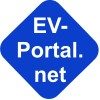The Tesla Story

Tesla Model 3
(Mit freundlicher Genehmigung/Courtesy of Pixabay [tesla-5937063__340.jpg])
Management Summary
In Q1 2023, something extraordinary happened: for the first time in over a century of automotive history, an electric car overtook an internal combustion vehicle to secure the No. 1 spot in global sales statistics. With this unprecedented success of the Model Y, Tesla has scaled another peak in its company history of only 15 years.
Another sensation was announced in Q2 2023 first by Ford and then by General Motors: Both traditional manufacturers want to use Tesla’s charging network in the U.S. in the future and equip their vehicles with Tesla outlets because the Tesla network has the best coverage in the U.S. and offers the highest reliability. As if in the penitential walk to Canossa, the two automotive icons are thus paying tribute to the new electric car “Pope” Elon Musk.
Elon Musk can rightly be called the Henry Ford of the 22nd century, because he has virtually single-handedly driven the mass production of the electric car; the Model Y is accordingly the T-model of this century.
The interesting thing is that Elon Musk is not originally from the automotive industry, neither the inventor of the electric car nor the founder of Tesla. Nevertheless, he has managed to completely reposition the electric car: Electrically powered vehicles have been around for more than 100 years, though other manufacturers have tended to position them as “ecologically correct but staid.” Tesla’s models were marketed as “sexy, cool and sporty” right from the start, and the advantage of the electric drive with its powerful acceleration was clearly emphasized. The motto: having fun while driving and being environmentally conscious are not contradictory.
Tesla is the first successful car start-up from Silicon Valley. Before Tesla, IT start-ups were the preferred choice, with the majority focusing on software. The automotive industry, on the other hand, had a reputation as an old economy, especially in the USA. Elon Musk has shown that start-ups can also succeed in a mature industry if a disruptive technological change is imminent and a start-up focuses exclusively on the new technology. This triggered a radical paradigm shift and breathed the Silicon Valley spirit into the dusty automotive industry.
Tesla’s success is no coincidence but the result of a very precisely planned success strategy. This strategy includes, among other things, building up its own charging network in order to solve the chicken-and-egg problem of “no business with electric cars without charging stations” or “no business with charging stations without electric cars”. While the other car manufacturers were still dozing off or pointing out in their silo thinking that others were responsible for building charging stations, Tesla created facts and covered its target markets with a dense network of fast charging stations.
Tesla’s impact on the automotive industry cannot be overstated. Tesla’s unprecedented success has triggered a veritable tsunami of electric car start-ups worldwide. But established manufacturers have also long since reacted and are converting their traditional brands into electric car brands or founding new brands. In China in particular, a large number of new start-ups and brands have emerged, and competition for customers is particularly intense here.
The view of Tesla over time is also interesting. At the beginning, Tesla was rather ridiculed, but after the development of the Model S, it was said that it was a “pretty decent vehicle, but it’s in the red”. Perceptions turned around when production of the volume model Model 3 started, additional plants were opened in the U.S. and China, and positive quarterly figures were achieved for the first time. When Mazda engineers in Japan disassembled a Model 3 and analyzed the central computer control units, it became clear to all players in the automotive industry that Tesla is a high-tech IT company and that Tesla models are rolling computers with electric drives.
With all this success of Tesla and the hype around Elon Musk, the question naturally arises: Can Elon Musk walk on water? Does he just succeed at everything? Certainly not. Like most start-ups, Tesla has already had to contend with technical problems and liquidity bottlenecks, but thanks to very efficient production of the volume models 3 and Y, the financial challenges have now been resolved. The outstanding problems include quality defects such as poor gaps and years of delays in new models such as the Cyber Truck.
Tesla has a serious safety problem with its full-bodied driving assistance system known as Full Self Driving (FSD). The system is prone to braking errors and has already caused fatal accidents in the U.S., with driver misuse also not ruled out. Currently, FSD only provides support for Level 2 driving, but is also to be used for Level 3-5 autonomous driving in the medium term.
Tesla is the only manufacturer to use a purely video-based system for cost reasons; all other manufacturers such as GM, Mercedes, NIO and Xpeng use additional, redundant sensors such as radar and lidar from Level 3 driving onwards.
We are very curious to see whether this risky strategy of Tesla will work out.
We can only speculate about the future of Tesla. Thanks to permanent cost optimization, Tesla currently seems to have a very high profit margin for the volume models, which also allows price reductions on a larger scale. This gives Tesla an important lever to keep its competitors at bay. Nevertheless, they are catching up; BYD has already clearly overtaken Tesla in terms of sedan sales on the Chinese domestic market. Tesla is still ahead in SUV sales, although BYD will show significantly higher growth rates in 2023.
Whatever the future of Tesla will look like:
Elon Musk has already written himself into the history books as the entrepreneur who gave the automotive industry a decisive impetus in the direction of more sustainable and CO2-free mobility.
The company history of Tesla
Tesla was founded in 2003 by Martin Eberhard and Marc Tarpenning in San Carlos in California’s Silicon Valley. In one of the first financing rounds in 2004, Elon Musk, who had previously raised $180 million through the sale of Paypal, also took a stake in the start-up. He gradually took control of the company, and both Tesla founders left in 2008.

Fig. 1 – Tesla Roadster, built on the basis of the Lotus Elise
(Mit freundlicher Genehmigung/Courtesy of Wikimedia Common Sense unter GNU Free Documentation License, Version 1.2 or later)
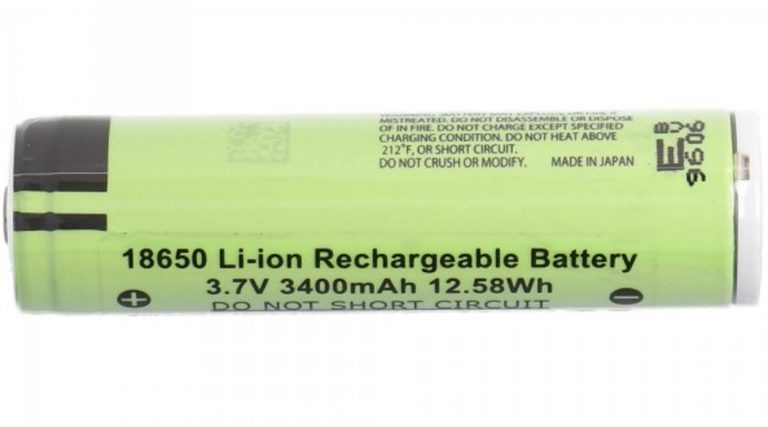
Fig. 2 – Panasonic cylindrical cell 18650
(Mit freundlicher Genehmigung/Courtesy of www.akkushop.de [Homepage])
For the first model, the Tesla Roadster, the development team acquired an existing vehicle, a Lotus Elise, and replaced the internal combustion engine powertrain with the electric drive developed in-house (Fig. 1). Production was outsourced and took place in small series at Lotus’ plant in England.
The Roadster was launched in 2008, and a total of 2450 vehicles of this type were sold. Despite the comparatively small number of units, Tesla was able to gain important experience in the field with components such as the electric motor, power electronics and battery.
The battery was constructed from cylindrical lithium–ion cells of type 18650 from Panasonic. Cells of this format are still produced in large numbers today and are used in many other products such as laptops (Fig. 2). The number 18650 describes the cell size, which has a diameter of 18 mm and a length of 65 mm.
The battery of the Raodster contains 6831 cells of this type.
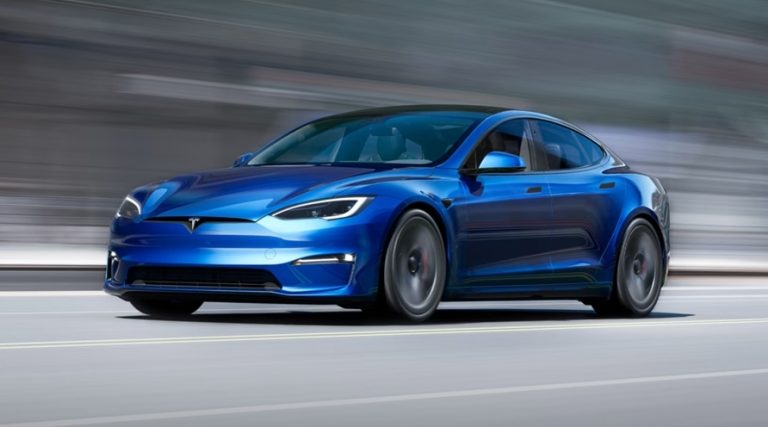
Fig. 3 – Tesla Model S
(Mit freundlicher Genehmigung/Courtesy of Tesla, Inc. [Homepage])

Fig. 4 – Tesla Ladestation
(Mit freundlicher Genehmigung/Courtesy of Tesla, Inc. [Homepage])
The first vehicle developed entirely by Tesla itself, the Model S, was presented to the public in 2012 (Fig. 3). This luxury sedan, which is still in production today, had a range of 500 km, which was groundbreaking for the conditions at the time. For production, Tesla purchased a manufacturing plant in Fremont from GM and Toyota, which is relatively close to the founding San Carlos location just across the Bay Area.
In parallel with the production of the Model S, Tesla also started building its own charging network (Fig. 4.). While competitors still rely on slow AC charging and inner-city traffic, Tesla’s charging stations were designed from the beginning as DC fast charging stations and were built along the main traffic routes in the USA with a focus on long-distance traffic.
The premium SUV Model X appeared in 2015 based on the drive technology of the Model S. The Model X brought Tesla to the brink of ruin because the production of the rear gullwing doors is extremely costly and only very small numbers could be built at the beginning.

Fig. 5 – Tesla Model 3
(Mit freundlicher Genehmigung/Courtesy of Pixabay [tesla-5937063__340)
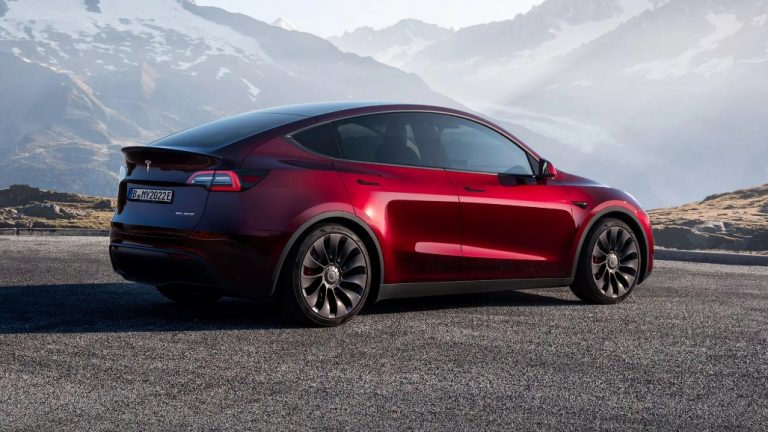
Fig. 6 – Tesla Model Y
(Mit freundlicher Genehmigung/Courtesy of Tesla, Inc. [Homepage])
The 1st volume Model 3 was launched in 2018 (Fig. 5), again the production ramp-up was described by Elon Musk as “production hell”. The mid-size SUV Model Y followed in 2020 (Fig. 6), with the Model 3 sedan serving as the technological basis.
Both models are produced at the main plant in Fremont. To increase production volumes and meet global demand, so-called gigafactories were gradually opened in Asia, North America and Europe. In November 2019, the Shanghai plant started production of the Model 3 and Y, in March 2020 the SOP (start-of-production) of the Model Y was in Austin/Texas and in March 2022 in Brandenburg/Germany.
Other models are in the pipeline or about to go into production, such as the so-called Cyber Truck and a tractor for heavy trucks according to US weight class 8 (15-36.2 t). A low-cost model for €25,000 is also said to be in development, with the production plant planned in Mexico.
Tesla has pursued a very consistent cell strategy from the outset and either produces its cells itself or sources them from local suppliers. For the HV battery, it initially used cylindrical cells with different formats and cell chemistry variants. 18650 cells are installed in the S and X models, and 2170 cells from Panasanic in the 3 and Y models.
The Chinese plant in Shanghai is supplied with cells from LG Energy Solution, which are also produced directly in China. The switch to the even larger round cells in 4680 format is planned, but apparently these cannot yet be produced in sufficient quantities. Therefore, Tesla also uses prismatic cells from CATL for the basic variants of Model 3 and Y produced in Shanghai.
One of Tesla’s competencies that was completely underestimated is software. As the developer of Paypal, Elon Musk was of course aware of its importance from the very beginning. Consequently, the central algorithms for the powertrain and the driver interface are programmed at Tesla itself and not purchased from suppliers in the form of control units, as is the case with competitors.
The software update process is similarly innovative. Traditional vehicle manufacturers can only update the software in the ECUs when the car is in the workshop, and this requires the vehicle to be connected by cable to appropriate diagnostic equipment. Tesla has relied on over-the-air (OTA) updates at the customer’s site from the outset, which is a much more efficient method and eliminates the need for a workshop visit.
The success strategy of Tesla
Why was Elon Musk able to build such a successful company more or less from scratch? We have summarized the key elements of his success strategy here:
(1) Focus initially only on the powertrain, i.e. take an off-the-shelf vehicle and replace the combustion engine by the electric powertrain (Tesla Roadster, Fig. 1).
(2) Build the HV battery from standard lithium ion cells (round cell 18650, Fig. 2), focus on an intelligent concept to interconnect the cells to modules and the modules to a battery.
(3) Make sure that there are always enough cells for the production of the batteries by cooperating with cell manufacturers or by own cell factories.
(4) Develop a premium model as the first own vehicle, because more money can be earned with it (Tesla Model S, Fig. 3), true to the motto “Large Cars, large Profit”.
(5) Build your own charging system, don’t expect the power companies to do it for you. Solve the chicken-and-egg problem of “no charging stations, no electric cars, and vice versa”. Focus on DC fast charging rather than AC slow charging from the outset.
(6) Don’t plan on making a profit in the first few years, this has to come with the volume series (Tesla Model 3 and Y).
(7) Save on sales and marketing. Sell the vehicles online via your own website, use social media for marketing.
(8) Develop the software yourself and use over-the-air updates to fix bugs or roll out new features.
Impact on the automotive industry
Elon Musk has thus not only influenced the established car manufacturers, but also triggered a veritable tsunami of start-ups for electric cars:
Start-up wave due to Tesla copycats.
The successful Tesla example has encouraged many entrepreneurs around the world to start their own electric car startups, especially in China, the U.S., but also in countries without their own auto industry, such as Vietnam. Certainly not all start-ups will be successful, but the competitive situation for established car manufacturers – but also for Tesla itself – is definitely getting tougher.
Tesla has fired the first shot at the “castle of the established”, so to speak, and thus blasted a breach in the wall. The imitators are using the breach and penetrating the castle; the battle for the customer is definitely getting tougher.
Start-up wave by former Tesla employees
Part of the Silicon Valley brand essence and success concept is that executives from already established companies are founding new start-ups. In this way, Silicon Valley is reinventing itself over and over again. A prominent example is Intel, which was founded by eight former Fairchild employees. Fairchild, in turn, was started as a start-up by executives of Shockley Semiconductor, which in turn was founded by the inventor of the transistor, William Shockley.
With Tesla, this success story is repeating itself. There are also new companies founded out of Tesla by former executives.

Fig. 7 – Lucid Air Sapphire from Lucid Motors
(Mit freundlicher Genehmigung/Courtesy of Lucid Group Inc.[Media Room])
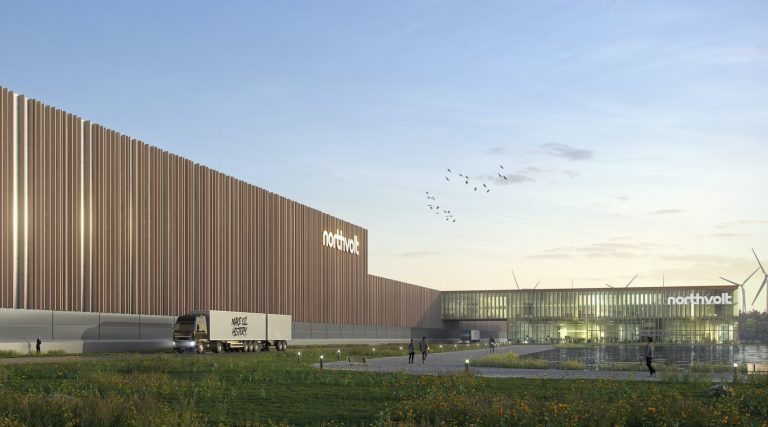
Fig. 8 – Skizze – Northvolt in Heide, Schleswig-Hollstein
(Mit freundlicher Genehmigung/Courtesy of Northvolt AB [Press Kit])
View of Tesla over Time
It is remarkable how Tesla was perceived by society in general or by the automotive industry. The reception shows clear changes over time, which could also be observed with other start-ups such as Amazon.
Whereas at the beginning Amazon was perceived as “they only sell books” or “they sell all kinds of things but are in the red”, the perception changed completely when Amazon outsourced its IT competence in the cloud area to a new business segment (AWS). This made it clear that Amazon had long since ceased to be a bookstore, but a high-tech IT company with connected logistics. Amazon’s profits and share price virtually exploded and its reputation rose once again.
The situation was similar at Tesla. At the beginning, the Tesla Roadster was described as “they’ve only built in the electric drive”, and later the Model S was described as “quite a decent model, but it’s in the red”. When further plants in the USA and China were commissioned with the volume model Model 3 and the first positive quarterly figures came in, the perception turned positive.
The aha moment in the auto industry was in 2020, when Mazda engineers in Japan disassembled a Tesla Model-3 and analyzed the central computer control units, or embedded control units (ECUs).
They found that Tesla Model 3
- manufactures the central ECU for telematics and assistance systems itself, including the AI chips and software,
- is equppied with much fewer ECUs per vehicle,
- Mazda itself does not currently have the expertise and resources to produce such a highly integrated ECU.
This finally made it clear to all players in the automotive industry that Tesla, like Amazon, is a high-tech IT company and that Tesla models are rolling computers with electric drives.
In Germany, with its internationally very successful and renowned automotive industry, the perception changed at the latest on September 12, 2019, with Elon Musk’s announcement that he would build a production plant in Brandenburg close to Berlin.
Can Elon Musk walk on water?
Can Elon Musk walk on water? Does he just succeed at everything? Certainly not. Tesla, too, has faced some challenges in its still short history. Tesla has one serious problem with its Full Self Driving (FSD) driver assistance system.
(1) FDS is suspected of causing fatal accidents.
In the U.S., investigations are underway into fatal accidents allegedly caused by faulty braking by the FSD assistance system. In Germany, Tesla 2022 was ordered by the Munich I Regional Court to refund most of the purchase price of a Tesla Model X to a female buyer (approximately €110,000). In a technical expert opinion, FSD was found to trigger faulty braking as well as to have problems in roadworks.
(2) FDS is a video-only system.
Tesla is alone in the world with its “video-only” strategy for FSD. Other manufacturers rely on additional, redundant sensors such as radar and lidar for autonomous driving from Level 3, which compensate for the weaknesses of video cameras in bad weather (fog, low sun, etc.).
This saving on sensor technology is all the more remarkable because Elon Musk’s demands on FSD are extremely high: In the future, every owner of a Tesla should be able to rent out his Tesla as a Level 5 vehicle to third parties, once the FSD software has been developed to this extent and rolled out on all Tesla vehicles via over-the-air updates.
(3) General quality problems
From the beginning, there have been quality issues at Tesla that suggest problems in production. These include poor gap dimensions, trunk lids that hit the painted bumper when closed (Model 3) and chipped the paint, and the like. Tesla nearly ruined itself financially during production of the Model X because assembly of the rear gullwing door in assembly line operation was so difficult that very few models could be built for a long time. In a recent TV report, a driver complains about plastic peeling on the steering wheel of his expensive and only a few months old Model S Plaid model.
(4) Delays in new models
The best-selling type of car in the U.S. is the so-called light truck or pickup, which is driven primarily in the Flyover States, the heartland of the U.S., away from the elite East and West Coasts. Ford has been leading this field for decades with its F series and has a good chance of being successful with the electrified version as well, because Tesla’s cyber truck has been very delayed and probably won’t meet the taste of the average American with its extreme design.(
The future of Tesla
What does the future hold for Tesla? Can the success simply be continued like this? Even we in our editorial team don’t have a crystal ball at hand. What is clear is that competition for Tesla is getting tougher, especially from the many new Chinese electric car start-ups, but also from the established manufacturers.
In the field of electric drive, all competitors are catching up, and some manufacturers such as BYD have already caught up with Tesla.
Tesla certainly has the biggest lead in the area in hardware and software development; here, Tesla is at least two years ahead of many other companies.
But the Chinese manufacturers have also caught up massively in this area, which is impressively demonstrated by the planned cooperations of VW and Audi with Xpeng (VW), Leapmotor (VW) and IM Motors (Audi).
So it remains exciting to see how Tesla will continue to develop. But one thing is definitely already certain today:
Elon Musk is the entrepreneur who has given the automotive industry a decisive impetus in the direction of more sustainable and lower CO2 mobility.
